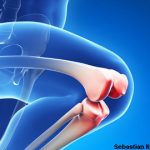He emphasized again that these studies, particularly the pediatrics trials, show what can be achieved with large collaborative networks working together on these challenging questions. “With very few exceptions, the work that I highlight [in this session] required collaboration and trust among many investigators,” he said. “Very little of this work could have been accomplished at a single site or even a small handful of sites.”
Basic Science Perspective: Moving Toward Personalized Medicine
Steven R. Goldring, MD, chief scientific officer and St. Giles Chair of the Hospital for Special Surgery and professor of medicine at Weill Cornell Medical College in New York, N.Y., touched on several areas of research over the past year that are helping to further refine an understanding of the disease mechanisms and pathophysiology of rheumatic diseases. Among this research is ongoing inquiry into identifying new molecules and pathways that hold promise for developing more effective and specific therapies for rheumatic diseases. He cited a number of studies looking at targeting the interleukin 23 pathway for treatment of ankylosing spondylitis and psoriatic arthritis, the use of lubricin to slow the progression of osteoarthritis, and targeting the Wnt pathway for treatment of fibrosing disorders such as scleroderma.5-7
These studies show what can be achieved with large collaborative networks working together.
He also talked about the huge databases generated by two parallel collaborative projects, ENCODE and the NIH Roadmap Epigenomics Mapping Consortium, and the daunting task of applying the information from these databases to understanding disease mechanisms and biological and clinical processes. He highlighted examples of recent studies that are already beginning to address these needs, such as, “a study that has identified a generic variant (SNP) that controls the level of disease activity in rheumatoid arthritis and Crohn’s disease, and a study that has identified the potential role of epigenetic modifications in DNA structure in the pathogenesis and activation of disease flares in patients with systemic lupus.” 8,9
Dr. Goldring emphasized that information from the genomic and epigenetic studies is beginning to provide important insights into disease mechanisms and pathophysiology. “These insights also hold the promise of providing biomarkers that can be used to direct patient care, predict outcomes, and provide insights into disease mechanisms that can be used to select optimal patient treatments,” he said.
Mary Beth Nierengarten is a freelance medical journalist based in St. Paul, Minn.
References
- Katz JN, Brophy RH, Chaisson CE, et al. Surgery versus physical therapy for a meniscal tear and osteoarthritis. N Engl J Med. 2013; 368:1675-1684.
- O’Dell JR, Mikuls TR, Taylor TH, et al. Therapies for active rheumatoid arthritis after methotrexate failure. N Engl J Med. 2013;369:307-318.
- O’Dell JR, Curtis JR, Mikuls TR, et al. Validation of the methotrexate-first strategy in patients with early, poor-prognosis rheumatoid arthritis: Results from a two-year randomized, double-blind trial. Arthritis Rheum. 2013;65:1985-1994.
- Specks U, Merkel PA, Seo P, et al. Efficacy of remission-induction regimens for ANCA-associated vasculitis. N Engl J Med. 2013;369:417-427.
- Sherlock JP, Joyce-Shaikh B, Turner SP, et al. IL-23 induces spondyloarthropathy by acting on ROR-γt+ CD3+CD4-CD8- entheseal resident T cells. Nat Med. 2012;18:1069-1076.
- Ruan MZ, Erez A, Guse K, et al. Proteoglycan 4 expression protects against the development of osteoarthritis. Sci Transl Med. 2013;5:176ra34.
- Akhmetshina A, Palumbo K, Dees C, et al. Activation of canonical Wnt signalling is required for TGF-β-mediated fibrosis. Nat Commun. 2012;3:735.
- Lee JC, Espéli M, Anderson CA, et al. Human SNP Links Differential Outcomes in Inflammatory and Infectious Disease to a FOXO3-Regulated Pathway. Cell. 2013; 155:57-69.
- Absher DM, Li X, Waite LL, et al. Genome-wide DNA methylation analysis of systemic lupus erythematosus reveals persistent hypomethylation of interferon genes and compositional changes to CD4+ T-cell populations. PLoS Genetics. 2013;9:e1003678.



